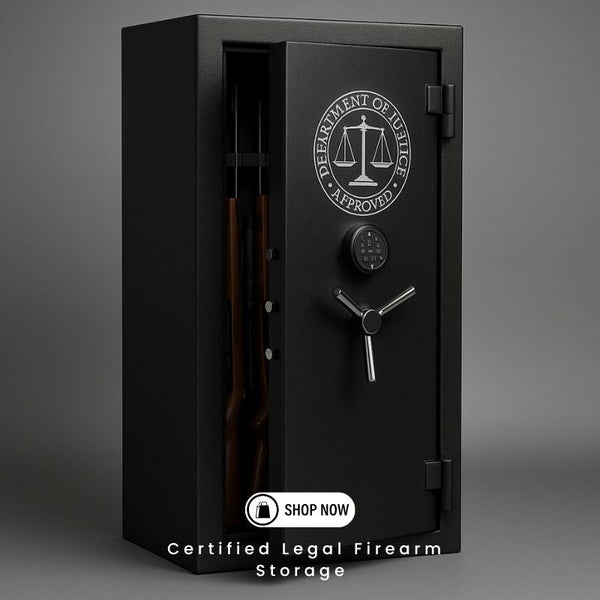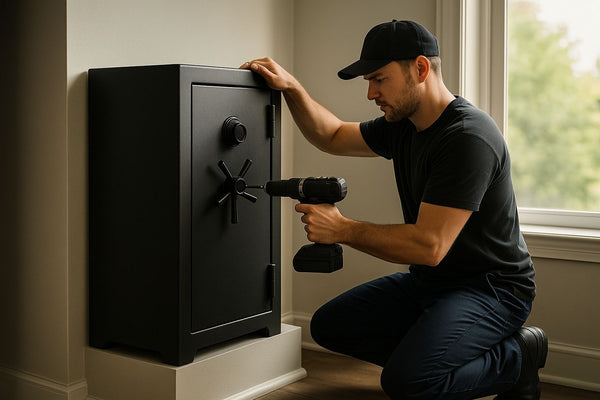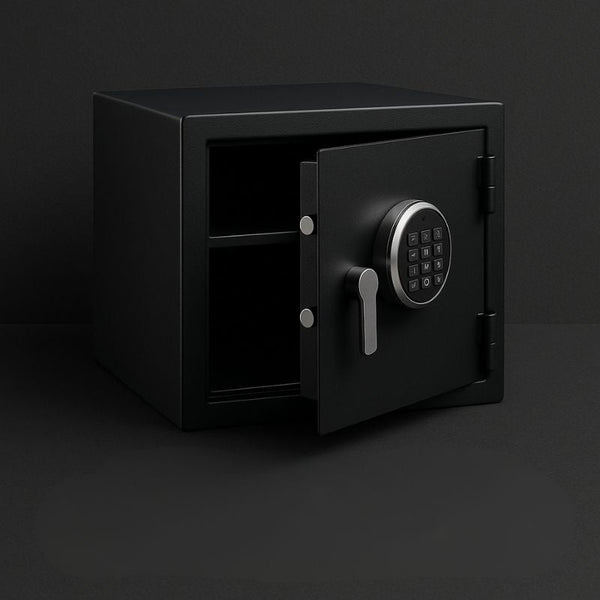
Learn. Choose. Secure.
Your one-stop to learn more about safes.
Choosing the right safe isn’t just about size or price — it’s about matching the safe to your unique security needs. Start by determining what you’ll store (documents, jewelry, firearms, cash, or a mix). Next, consider threat types — fire, burglary, water damage, or all three. Pay attention to UL ratings and locking mechanisms, and choose a size slightly larger than you think you need. Remember: a safe is a long-term investment — going too small is the #1 regret buyers report.
Gun storage requirements vary by state and jurisdiction. In many areas, safes must meet DOJ compliance standards to be legally recognized for firearm storage. These safes often feature reinforced steel, pry-resistant doors, and tamper-proof locking systems. Storing firearms in a compliant safe not only helps you follow the law but also protects you from liability in the event of unauthorized use. Always check your state’s official firearm regulations before purchasing.
The Underwriters Laboratories (UL) rating is the gold standard in safe certification. Ratings like TL-15, TL-30, or RSC indicate how long a safe can withstand forced entry attempts. Fire ratings (e.g., 1-hour, 2-hour) show how long a safe protects contents at high temperatures. Higher ratings equal stronger protection — but also higher cost. UL ratings are your assurance the safe has been independently tested under real-world attack conditions.
A common mistake is buying a safe that fits your current needs only. Experts recommend purchasing at least 30–50% larger than you initially require, to accommodate future valuables or documents. Consider interior layout options like adjustable shelving, door organizers, and modular compartments. Factor in installation space, door swing clearance, and accessibility — especially if placing the safe in a closet, under stairs, or in tight areas.
Fireproof safes are designed to withstand high heat and protect paper documents, electronics, or media from fire damage. Burglary safes prioritize steel thickness, locking complexity, and structural reinforcement to resist forced entry. Hybrid safes offer both, but may not be as specialized in one area. The right choice depends on your primary threat — in some cases, owning two specialized safes is the best solution.
- Electronic Keypads: Fast access, customizable codes, and lockout features — but require battery changes.
- Mechanical Dials: Extremely reliable and maintenance-free, but slower to open.
- Biometric Scanners: Instant access using fingerprints; convenient for frequent use, but dependent on sensor quality.
Many buyers choose electronic locks with a mechanical override for the best of both worlds.
Even the heaviest safe can be stolen if it’s not secured. Always anchor your safe to a concrete floor or solid subfloor using the manufacturer’s recommended bolts. Consider professional installation for large or high-security models to avoid damage and ensure correct setup. Placement matters too — hidden from view, in low-traffic areas, but accessible enough for regular use.
A quality safe can last a lifetime if properly maintained. Keep mechanical locks lubricated per the manufacturer’s guidance, replace electronic lock batteries annually, and inspect for signs of rust or wear. In humid environments, use a dehumidifier rod to prevent moisture damage. Always keep a backup of combination codes or override keys in a secure location.
Ready to Find Your Perfect Safe?
Take our Safe Finder Quiz to get personalized recommendations based on your specific needs.
Take the Safe Finder Quiz



